Postures and Gestures
Destination:
ThaiInfo
Welcome to Amazing Thailand
Total Page Views for ThaiInfo: 3,034,284 - Views this week: 3,034,284 |
|
| Even though there are various representations and different periods of style during the centuries, certain characteristic principles of design were kept when building a Buddha statue; postures and gestures have always had a deep religious significance. | 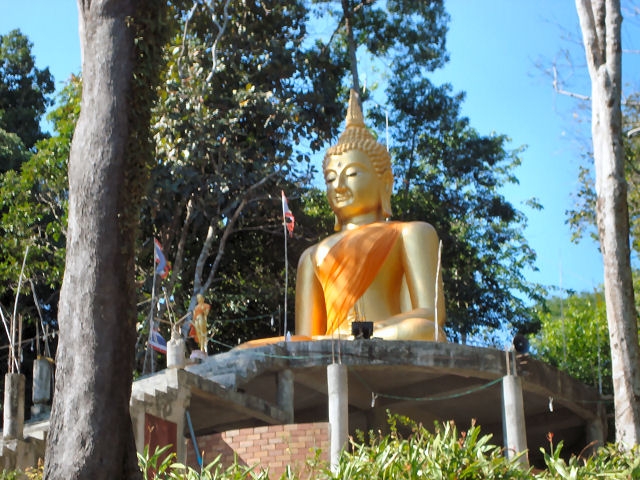 |
Sitting: Buddha sitting in meditation in lotus position - most frequent representation
Lying: Buddha while crossing over to Nirvana - supporting his head with one hand
Standing: Buddha is taming the wild elephant of his enemies, which was sent to destroy him.
Walking: Buddha’s return to earth, after rising up to heaven in order to preach his doctrine to his mother.
|
Worth mentioning are the gestures of the enlightened - the mudras:
Bhumisparsa mudra: Buddha, in the basic sitting position, touches the earth with his right hand and calls it as a witness of his enlightenment. The left hand lies on his lap with his palm facing the sky, the right hand is above the left knee, the fingers point to the soil. | 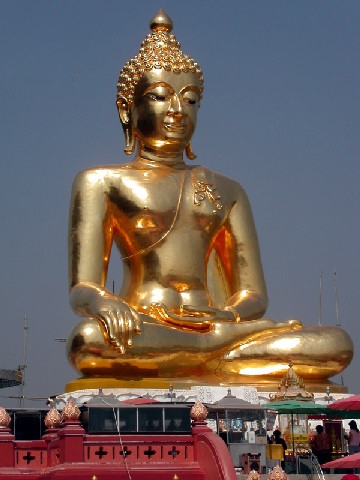 |
| Samadhi mudra (dhyana mudra): Buddha meditates. Both hands are lying on his lap, one on top of the other, palms facing upwards. | 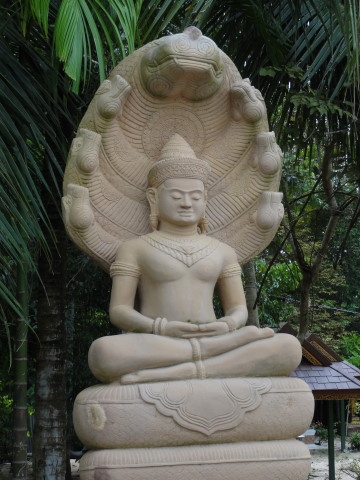 |
| Vitarka mudra: Buddha explains his doctrines. One hand or both hands are lifted until the chest is parallel to his body, thumb and index finger touch each other and form a circle, symbolizing the “wheel of the doctrine”. | 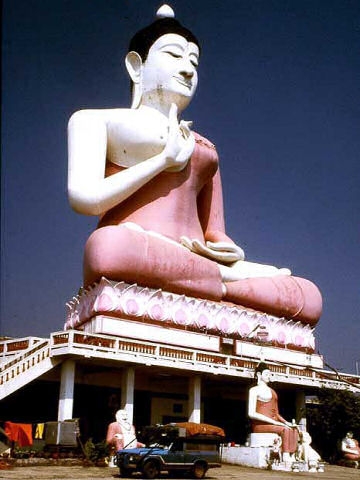 |
| Abhaya mudra: Buddha gives protection and peace. The right forearm sticks out at right ankle to the body, the palm facing outside, the fingers upwards. | 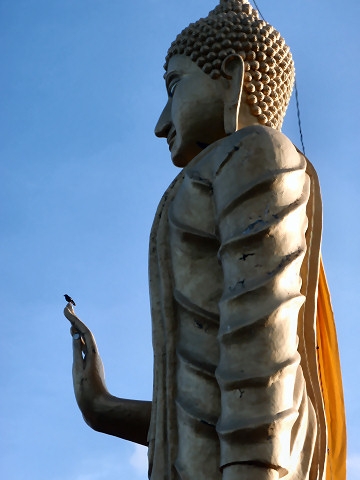 |

